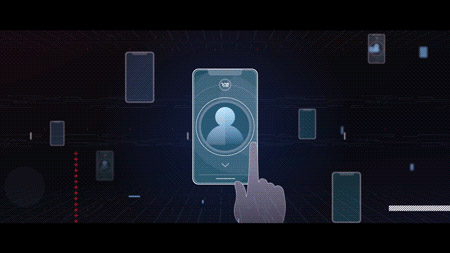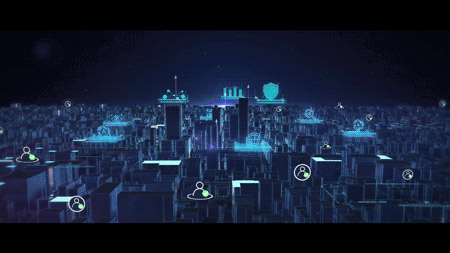At present, financial APP, especially mobile security APP, has developed to date, there are some general problems:
1. From the perspective of users: high homogeneity of products, poor experience;
2. From the technical point of view: production is relatively low, lack of knowledge is not vertical, and product iteration is difficult;
3. From the perspective of business operation: unable to grasp the pain points of users, unable to give full play to the advantages of the Internet;
……
At the same time, these apps generally violate the social attribute, the basic element of mobile Internet. So where should financial APPs go?
Serious homogenization and stacked APP functions
From the perspective of product design, many financial APPs are not design at all, they are just function stacking. Add menus, interfaces, etc. according to business requirements, or transform some operation processes (cooperate with KYC, CA certification, risk assessment, etc.) based on the requirements of compliance supervision. The products designed in this way lack the attention and understanding of customers' core demands.
Taking securities APP as an example, homogenization is very serious. Although the APP level of each company is also high or low, these small differences are not enough for users to stay. In other words, customers will not choose you because the APP is good, but they will deny a company because the APP is not good, and it is difficult to build the reputation of the securities APP.
One of the reasons for the homogenization is that the business forms of securities companies are generally similar. The business level has already been highly homogenized. After the internal homogenization, the external interaction logic and UI design "learn from each other". The second reason is that most of the "cores" of APPs in the industry come from a limited number of manufacturers, and the appearance is similar. It is basically impossible for the technology team of securities companies to try to change these traditional closed technologies.
In fact, the mobile terminal has a great advantage in collecting user interaction behavior data. Product designers can combine the user's transaction history and match the market changes. They can completely build a model to analyze the user's operating habits, investment preferences, market reactions, and functions concerned, Design a complete APP to meet the needs of customers.
For securities APP, the problem of homogeneity of business products needs to be solved from the business level, but it can be differentiated through different mobile terminals through product innovation, and try new technologies to achieve a qualitative leap. The "reference" of app will narrow the way for securities companies.

The pain point can not be grasped, and the effect of internal propaganda is poor
Whether it's financial APPs or websites, generally speaking, there is a lack of "operation" design consideration. There is a big gap between Internet companies and Internet companies in this aspect. While Internet companies design a good product, their online operation ability is also very prominent, and there are many "routines" for online operation promotion. However, banks and securities companies that traditionally rely on offline outlets to do retail business are very lack of online operation experience and talents. Employees with online operation awareness can only market the exhibition industry on the public Internet platform, but they are also facing huge compliance supervision problems.
The APP of banks and securities companies has almost no content to interact with customers, and there are few things they can do except to show advertisements of financial products on the home page of the APP. In addition, the internal unified operation of the content, often and all regions of the country, the regional network demand has nothing to do with. In other words, there is no regional staff involved in the operation of the APP, so the staff of the branch often do not pay attention to the content of the APP. When customers go to a bank branch to consult the financial products promoted in the APP, maybe the local service staff will be "unprepared" and give you a "face covered" expression.

Version iteration is difficult
Now everyone is talking about agile iteration, but for financial institutions, "agile" is more often just a good wish.
First of all, the characteristics of the industry determine the basic attributes of safety, stability, compliance and robustness. "Maintaining stability" is the first principle to follow. There is absolutely no tolerance for any defects that can cause production accidents and lead to regulatory accountability. More innovation is not worth an accountability letter.
Secondly, most financial IT companies lack the full closed-loop of blue-green test and gray-scale release (including infrastructure supporting rolling release technology products, methodology of operation cooperation, management system of release and rollback, etc.), so the trial and error cost is very high. With the continuous enrichment of functions, more and more test scenarios need to be regressed each time. Any change or increase of functions is to start the whole body. Only by maintaining a very high test coverage can we really ensure that the old functions are not damaged by the new changes.
Results the test cycle is getting longer and longer, especially when the automated regression test can not be done, the manual test team is always on the run: when the business functions stack from 30 to 300, we can fully understand the IT operation and maintenance team's attitude towards the release of new APP functions with an extremely conservative attitude, hoping to extend the test time to ensure the online quality. Therefore, even if the "agile iteration" can be maintained in the development phase, it will have to be terminated in the testing and release phase.
According to the rule of 28, only 20% of the APP users are likely to use the functions. In other words, most of the functions are of low use value, but they can't be cut off at will. As a result, the historical burden is increasing, and the APP gradually becomes a "glass" (with the time migration and personnel change, there are always some parts in the system that no one wants to touch, The pace of development is getting slower and slower, and the input-output ratio is getting lower and lower.

Lack of Internet thinking
There are two fundamental reasons for the above three problems, one is the constraint of technical architecture, the other is the cognitive bias of product design to mobile Internet.
At present, the technical architecture of banking and brokerage APP is completely "tightly coupled". The code framework is not clear, the function coupling degree is high, and the professional level of the development team in the financial field is low, such as the absence of best practices in object-oriented design and domain modeling, the inability to pre consider the "testability" of the technical architecture at the design stage, the misunderstanding of componentization, and the lack of the ability to design the technical architecture The tool chain of version management and dependency management is not properly understood and used.
In a word, there is a certain gap between Internet technology companies and Internet technology companies.
In terms of design, we often do not understand the basic elements of mobile Internet and mobile devices thoroughly:Point to point connection, strong social attribute, users always online, more Scenario Oriented and highly universal( Some seemingly "people on earth understand" but do not have a deep understanding of the corner)。
However, is it just the financial APP that ignores the above elements? The complex function stack violates the principle of "universality" of small mobile phones, which is simple and easy to use.
What is "universality"? Wechat is one of the best examples: in the PC era, grandparents who were completely unable to access the Internet and use browsers are now heavy users of wechat! The road is simple, the beauty is speechless!
Secondly, APP is clearly running in a mobile phone, but it does not have the ability to interact with others. Customers have doubts that they can not find their own service personnel in APP to respond to the current operation context, while customer managers can't reach customers on APP, and even need other channels to communicate with each other.
For users, it is often a typical stand-alone: all the user knowledge of the APP and the server have a cold and rigid interface connection. Although everyone is connected with the same APP, they are not related to each other. When APP forms an isolated and isolated information island with other applications on the same mobile phone (for example, it can't share content to other social platforms), it will lose its ability to spread to other application channels.
The above two problems lead to the fact that most APP development is still carried out in the way of "informatization". However, the forms of "informatization" and "digitalization" are different. The former emphasizes connection, while the latter is information dissemination and service output.
The direct consequence of the implementation of mobile terminal according to the idea of "informatization" is to separate the relationship between financial institutions and customers:On the one hand, customers do not need to visit the business outlets of financial institutions because of the convenience brought by mobile Internet; On the other hand, financial institutions and customers lost offline contact, but did not establish online interaction。
At this stage, it is out of date to treat APP as a software. It is also a wrong cognition to think that improving the user interface of APP, adjusting, adding and deleting functions can improve the "user experience". APP is not the whole user experience. For example, is there any service staff in the APP on demand? A real example is that as a seven diamond user of a big bank for more than ten years, he may never contact his account manager in the bank's APP. Even if the APP is equipped with 1000 functions, there is no "experience" for the user.

Social is the soul of an application
For example, in recent years, the genes of Yiyun music and Duoduo have strong social attributes.
It is no longer feasible to regard app as a "handheld portal" and integrate various functions for users. The result of this kind of thinking is actually no different from a one-way "machine" that hands over the business of financial institutions to users. This kind of APP has no stickiness with customers. Customers even don't bother to close their accounts. If you change an APP, they will become customers of other banks and securities companies, not to mention the "activity" and "frequency" of users. Users must "go to the temple of three treasures for everything". In a bull market, the frequency of use may be higher. In other times, the attempt to let users use the APP more is basically futile.
In the "second half of mobile Internet", APP needs to seriously consider the most important attribute of mobile Internet itself and the origin of mobile phone - socialization. In other words, users can interact with each other, your employees and your team in your APP. When a user (whether an individual or an institutional user) opens a bank APP, he can not only provide self-service or contact the call center in the APP, but also find his own customer service manager, a professional financial consultant who can solve his concerns in real time, a professional team who provides one-stop service, and even an entire business outlet, This is the so-called "bank in a pocket" - let the user take his bank / securities company for a trip, open the APP whenever necessary, and the virtualized banks and securities companies are in the APP.

Fragmentation
In the cloud, in the past few years, "micro service" has been popular, which is essentially fragmenting the traditional "single application". Fragmentation of course brings the loss of managing them (small programs, micro services), but now these problems have long been solved by more and more mature development and operation platform and tool chain. For example, docker containerization ecology, kubernetes container choreography management technology, FAAS function as a service tool chain and so on make the development and operation of small granularity services on the cloud side more convenient, stable, elastic and scalable. Wechat itself actually acts as the "runtime" and management tool of small programs on the end side.
Financial institutions can slim down their APPs, peel off the old and new functions, and develop them in the way of independent life cycle and independent development and testing team - useful scenarios continue to deepen and invalid ones are discarded in time. The overall technical architecture is stable, which makes it possible to add, delete and change business functions frequently. At the same time, the development threshold is minimized, the trial and error cost is reduced, and the agile iteration is realized.
In the era of mobile Internet, users' reading time and application use time are highly fragmented. Correspondingly, the fragmentation of front-end user experience. All mobile phone users in China have been fully cultivated by wechat applets. In various scenarios, "use as you need" and "throw as you go" are very typical "utility computing".
In the era of information, the third-party information purchased from the APP of securities companies is homogeneous, and often can not become the most trusted information source of customers (maybe customers also go to see the professional financial APP). However, the professional opinions shared by the star analysts of the securities companies and the opinions provided by the investment consultants to the clients are really valuable and differentiated information in the APP, which is really the information produced by the securities companies themselves. Two way interactive communication, with "fragmented" push to achieve business scenarios and enable users to really participate.


